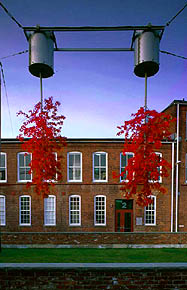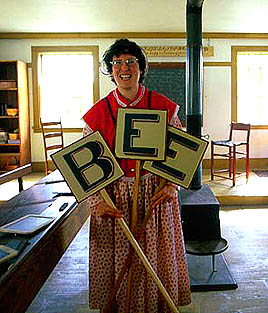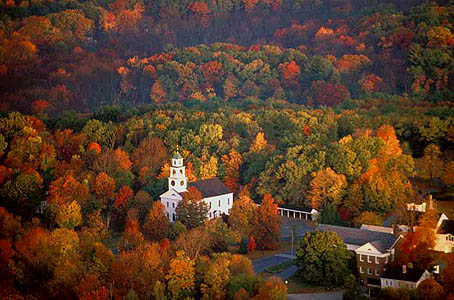|
|
|
|
|
USA
Massachusetts
An inexperienced leaf peeper in the Berkshires

|
|
|
|
|
USA
Massachusetts
An inexperienced leaf peeper in the Berkshires

Photography and text: Paul Smit
The Berkshires? Somewhere in the south of England perhaps? True, the residents are great lovers of tradition and history and the villages appear very un-American. But it is indeed the USA, west Massachusetts. It is a conveniently nearby getaway for New Yorkers and Bostonians seeking elegant peace and quiet. Moreover, it is the ultimate destination for leaf peepers.
Evening is setting in as I arrive at the Cranwell Hotel. An English castle rises before me, warmly lit from within, and I am soon surrounded by its luxury. Upon arriving in my room I open the window wide and in the dark try to imagine all the colours of the Indian Summer. I am here for the autumn foliage, for the blazing gold and scarlet of the trees in Massachusetts where it is more beautiful than anywhere else in the world.
The next morning, to my dismay, as I sit with my yoghurt and fresh strawberries in the breakfast room, all I see outside is green. Three months ago I carefully studied the weather predictions on the Internet and spent a considerable amount of time on the phone with the Massachusetts Office of Tourism and Travel, an agency with vast experience in autumnal affairs. Nonetheless, experience still must bow its head to weather's fickle nature.
The owner of the hotel confirms that the leaf-peeper mob has not descended on the Berkshires yet. Leaf peepers are tourists who go where the autumn colours are. Those who do not come from overseas and who do not have to book their trips far in advance - as I did - can keep track of the autumn colours in real time on the Internet and leave on the spur of the moment.
A second disenchantment follows; talking with the American hotel guests I discover they don't understand the way I use the term Indian Summer. When I explain what I mean they say, 'Oh, fall foliage!' It seems that only Europeans use the term Indian Summer to refer to the autumn colours of this area.
Fine, so I am a 'leaf peeper' arriving too early for the 'fall foliage'. The owner of the hotel tries to comfort me by telling me the colours can change in a trice and she assures me all the signs are promising. The morning mist has left a slight frost on the rolling lawns and the trees. A night frost that leaves some ice crystals on the leaf stems is just what it takes to start the turning of the leaves.
The mist gives way to a summery day. Am I going to let my mood be ruined by the lack of autumn hues? The Berkshires is, after all, a colourful area even without the autumn. No other place in the States outside of its cosmopolitan cities has as much art and culture on offer as the Berkshires do.

© Norman Rockwell Museum
The Norman Rockwell Museum is just what I need to lift my spirits. It is impossible to walk through here without a smile on your face. Not many people have heard of this artist in Europe. The art world in America till recently was dismissive of him, as we in the Netherlands were of Anton Pieck and Rien Poortvliet. Like these Dutch artists he worked very hard and made his art for the public at large. Rockwell's chosen subjects were not the fairytales and animals that they created, however, but humorist anecdotal moments from the lives of everyday Americans. In the course of painting 322 covers for The Saturday Evening Post over 47 years, he became the most well known and beloved artist of average Americans. All of the covers are on display in the museum and even though they seldom touch upon political or historical affairs they provide a surprisingly good overview of American everyday history, always with a touch of humour. It will come as no surprise that Steven Spielberg is one of the most enthusiastic collectors of Rockwell's work. If you watch his movies closely you will recognise many details from Rockwell paintings, most especially the atmosphere.
No larger contrast is possible than that between the Rockwell Museum and the Massachusetts Museum of Contemporary Art, MASS MoCA, in North Adams. Modern art is deadly serious, aims to shock, burdens you with a sense of guilt and is generally so inaccessible that if you get it you may count yourself among the art elite - isn't it? Then why am I, as in the Rockwell Museum, walking around with an irrepressible smile? Because the new American art is bursting with a zest for life. For example, one artwork that fills the entire gallery, an old factory hall, is called 'Überorgan'. Gigantic organ-like forms end in trumpets from which low bass sounds issue forth. The sounds are made by pumps, powered by a computer that is reading from a hand painted piano roll. It is one big musical instrument and as a museum visitor you get to walk around its internal organs, surrounded by wondrous melodies. The slow trumpeting emitted from a dozen Alpine horns is infectious in its good cheer, the hand painted piano rolls are a subtle reference to old-fashioned abstract painting, and the suction of the pumps contributes a sense of living and breathing.
Back at the exit, outdoors, I am once again reduced to a silly grin. These two trees are the first in the Berkshires to show their autumn colours. One third of the passers-by stop briefly to admire the brilliant colours. What they don't notice is that the trees are upside down. The roots are suspended some 6 meters above the ground with the top reaching downwards. The trees casually spread their branches as if nothing unusual is going on, so similarly several passers-by fail to notice anything out of the ordinary. Until finally a surprised onlooker calls: 'Bill, look!'
A third attraction in the Berkshires is the summertime Williamstown Theatre Festival. Major actors from New York and Hollywood flock to this festival and give star-studded performances, faraway from the stress of the big cities. I visit a restaurant called Mezze in the centre of town, another new initiative. It is a hip wooden affair with simple designer furniture and a fantastic chef. During the festival you can easily run into Gwyneth Paltrow or George Clooney here. And although it is a restaurant, it is not uncommon for the tables to be pushed aside in the midnight hours and for Mezze to turn into a dancehall.
Dancing and amusement did not feature in the lives of the good old citizens of Hancock Shaker Village. Yet they were famous for the ecstatic shaking after which they were named. This, however, came about through contact with God. They were one of the many religious sects that came to flourish in the climate of religious freedom in early America. They formed a commune where all possessions were shared. Sex however was expressly forbidden. For expansion therefore they depended on conversion and business wasn't doing too well in the second half of the 20th century. In 1960 the village died a natural death and was converted into a museum. For me the most interesting part of the open-air museum is seeing all their handmade crafts, the homemade household objects, furniture and agricultural inventions. It makes sense: to the Shakers making things with their hands was a form of prayer.
I never knew prayer could result in something as beautiful as the Round Stone Barn. The interior is surprising in its delicate beauty with an unfolding network of wooden beams. Very few cattle in the world have been so pleasantly sheltered.

The staff of the Old Sturbridge Village, a considerably larger open-air museum lying more to the east, are dressed in authentic historical costume, and stay in character while interacting with the visitors. The actors and craftspeople pretend not to know any better than that it is 1840. Of course this creates some interesting conversations, especially with the children. An actress in one of the houses asks a little boy what he is doing here. 'Oh, we are studying the 1850s,' he responds. 'Ah, so you are looking into the future!' she exclaims, 'Are you studying the railroads? I've heard there are carriages that move on those rails at more than 40 km/hour! Isn't that incredible?' Alarmed, she asks a group of girls in miniskirts what kind of disaster they have escaped from, a forest fire perhaps, 'You've lost your dresses, you poor things! If you like I can walk over to the pastor's house and see what clothes we have collected there for charity.' Giggles abound. 'No need to be too proud you know, those clothes are still in excellent condition.'
And so, I am anything but bored these early days of October. Autumn, however, refuses to burst forth in all its glory. I take the cable car to Jiminy Peak, which is surrounded by endless forests. I walk along wooded lakeshores. All perfect spots to visit once the leaves turn. But the yellow and red patches that are appearing here and there are not yet enough to entice the leaf peepers out of their houses.
And now my plane is leaving. From Boston it takes off land inwards and circles to the north on its way back to the ocean. I am reading the news in the paper, when the captain makes an announcement over the intercom: 'Ladies and Gentlemen, this is your captain speaking. We have now left Massachusetts behind and are flying over New Hampshire, with on your left Vermont, the most northern state of New England. I envy anyone who spent their vacation there, as the autumn colour bounty in that area is unrivalled by any other in the world." I loudly slam my paper, startling my neighbour - 9/11 is not forgotten - and peer out the window. Under a warm afternoon sun, the Indian Summer unfolds in all its gold and scarlet splendour.

© Massachusetts Tourism
Translated from the Dutch by Elise Reynolds
With each feature comes extensive practical information. Example
My Massachusetts features have been published in REIZEN, leading travel magazine of Holland, and in SP!TS, the largest Dutch newspaper.